Tucked away in the remote highlands of Cao Bang Province, near the Vietnam–China border, Ban Gioc Waterfall feels like something straight out of a fantasy novel. Towering limestone peaks, winding mountain roads, misty forests, and a massive waterfall crashing into turquoise pools—it’s a destination for explorers, dreamers, and anyone craving an escape into nature’s raw beauty.
At MYCT Viet Nam Travel, we specialize in crafting unforgettable journeys across Vietnam—from the bustling streets of Hanoi to the tranquil mountains of Sapa, the ancient charm of Hoi An to the sun-kissed waters of the Mekong Delta. If you’re planning a northern Vietnam itinerary, Ban Gioc Waterfall is a hidden gem that deserves a spot on your list.
Let us guide you through the top 8 check-in spots around Ban Gioc that promise stunning views, rich culture, and unforgettable moments.
Ban Gioc Waterfall, locally known as “Thác Bản Giốc,” is not only Vietnam’s largest waterfall but also one of the most spectacular natural wonders in Southeast Asia. Located in Dam Thuy Commune of Trung Khanh District, this mesmerizing site lies about 90 kilometers from Cao Bang city and nearly 400 kilometers north of Hanoi. What makes Ban Gioc truly special is its position right along the border with China, creating a unique dual-national natural treasure.
Measuring more than 30 meters in height and spanning over 200 meters in width, the waterfall roars and tumbles down in multiple layers across rugged limestone cliffs. It creates a dramatic yet poetic view—a wall of foaming white water cascading down against a backdrop of lush mountains. In the center of the falls lies a small, vegetation-covered islet that splits the waterfall into three graceful streams, resembling flowing silk ribbons drifting through the air.
The surrounding landscape complements the majesty of the waterfall. Towering karst formations, emerald forests, and a wide, mirror-like river at the base create a dreamlike setting. On sunny days, the mist rises and refracts the sunlight, forming beautiful, vivid rainbows that dance above the water.
Each season brings a different face to Ban Gioc. During the rainy months from June to September, the water flow is strong and thunderous, perfect for those who crave wild, untamed beauty. In contrast, the dry season from October to May offers a gentler, more tranquil experience, ideal for hiking, relaxing, and taking stunning photographs.
This site is a paradise for nature photographers, drone videographers, and anyone seeking a refreshing escape. Whether you’re traveling as a couple, with family, or in a group, Ban Gioc offers something unforgettable for every visitor.
About 30 kilometers from Cao Bang city, nestled in the highlands of Tra Linh District, lies Thang Hen Lake—a hidden gem that radiates serene charm. Often overshadowed by Ban Gioc Waterfall, this tranquil mountain lake is a destination in its own right. Surrounded by dense evergreen forests, towering limestone cliffs, and blooming wildflowers, Thang Hen feels like a lost world untouched by time.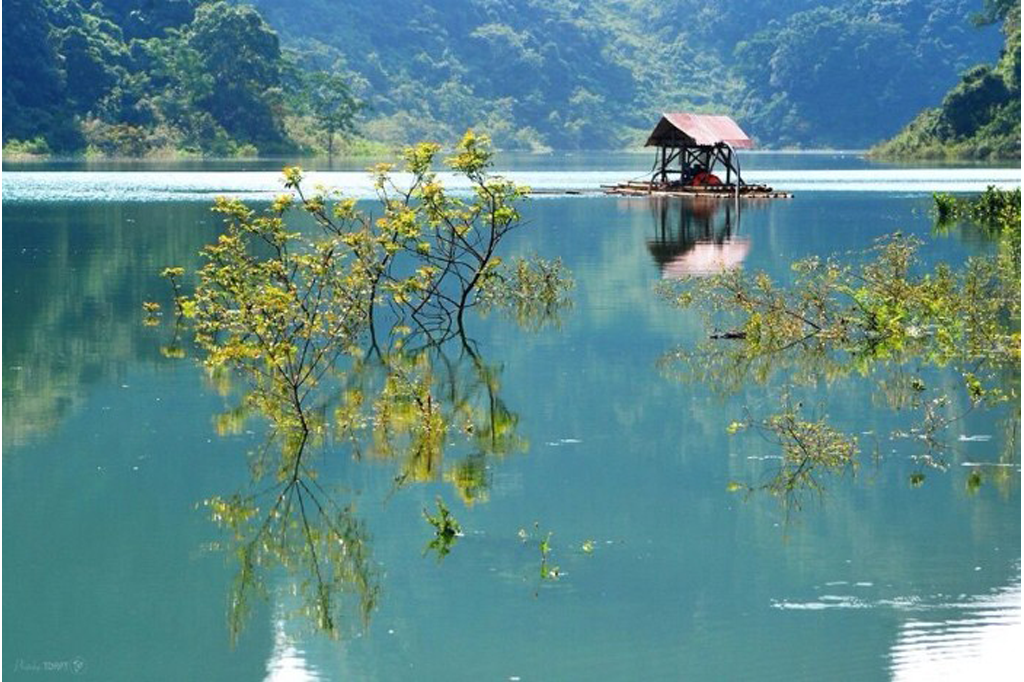
The name “Thang Hen” translates to “a swarm of bees” in the Tay language, referencing the lake’s unique geography—actually a cluster of 36 interconnected lakes that merge and separate depending on the season. Thang Hen is particularly magical because of how dramatically its appearance changes throughout the day and the year.
At dawn, the lake is often shrouded in a veil of mist, giving the illusion that it floats among the clouds. This early morning fog adds a mysterious, almost spiritual aura to the surroundings, perfect for meditative walks or peaceful moments of solitude. As the sun rises higher, the mist lifts and sunlight pours over the water, turning the surface into a glittering emerald mirror. The lake becomes a canvas for the reflection of the sky, cliffs, and passing birds. By afternoon, it adopts a quieter, more introspective tone—its surface still and glassy, with long shadows creeping over the hillsides.
Visitors can walk along scenic trails around the lake, rent a small boat, or simply sit and enjoy the silence. The air is pure and cool, and the biodiversity of the region is astounding. You might spot orchids blooming in the wild, hear the distant song of forest birds, or even catch glimpses of local fishermen casting nets with time-honored techniques.
Thang Hen Lake is ideal for travelers who value tranquility over tourist crowds, and for photographers who want to capture ever-changing moods of nature in a single location. It’s also a romantic spot for couples and a great stop for eco-travelers looking to experience Vietnam’s northern highlands at their purest.
Just a short drive from Ban Gioc, nestled in the hills of Gun Village in Trung Khanh District, Nguom Ngao Cave is a subterranean wonder that reveals the ancient geological history of the region. Formed over millions of years, the cave stretches for more than 2 kilometers underground, with chambers carved by the slow drip of mineral-rich water.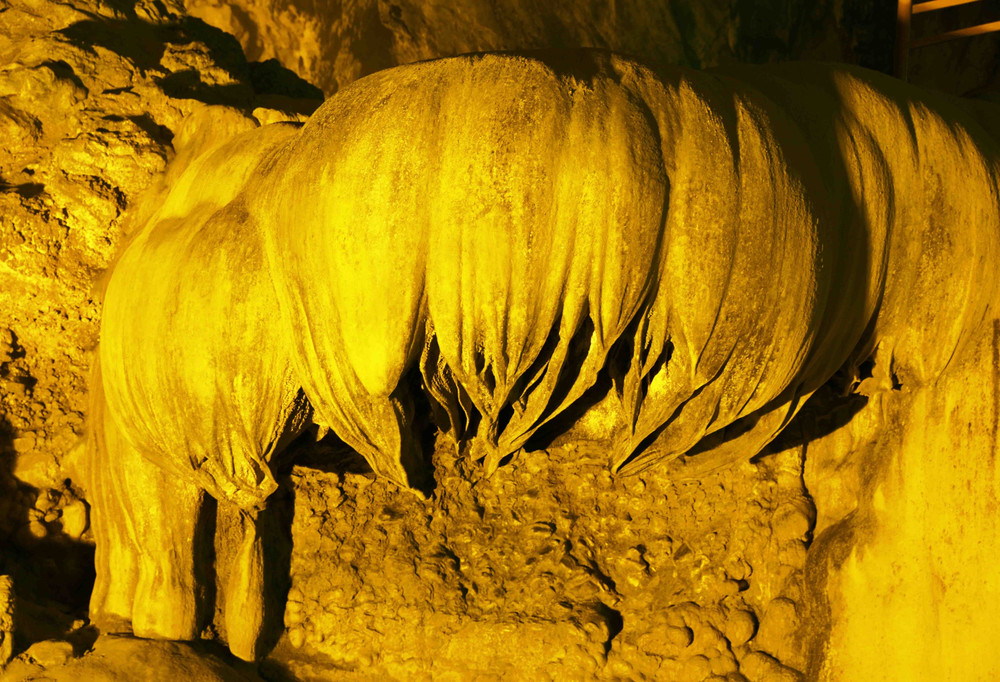
“Nguom Ngao” means “Tiger Cave” in the Tay ethnic language—“Nguom” being “cave” and “Ngao” meaning “tiger.” According to local legend, tigers once roamed this area, hiding in its cool depths. Today, instead of predators, it is awe and wonder that inhabit the cave.
As you step inside, the temperature drops instantly, and a world of shimmering stone opens up. Stalactites and stalagmites, sculpted over millennia, rise and fall like frozen waterfalls. They take on fantastic forms—some resemble lotus blossoms, others seem like coral reefs, and some mirror mythical animals or golden towers. Every corner of the cave has a story to tell, shaped by time, water, and nature’s quiet craftsmanship.
The cave is divided into three main sections: Heaven’s Pillars, The Central Sanctuary, and The Treasure Chamber. In Heaven’s Pillars, massive columns of stone soar toward the ceiling like ancient trees. In the Central Sanctuary, wide open spaces feel like underground cathedrals. Finally, in the Treasure Chamber, sparkling formations glitter under artificial light, evoking the impression of a hidden palace buried deep within the Earth.
Nguom Ngao is a cool retreat on a hot day, and its dry, well-lit pathways make it suitable for visitors of all ages. The cave is not only an excellent check-in spot for travelers but also an opportunity to learn about Vietnam’s geological heritage in one of its most visually stunning forms.
This experience is best enjoyed slowly. Pause often, let your eyes adjust to the shadows and shimmering walls, and listen closely—you might hear drops of water falling in rhythm, like nature’s own symphony echoing through the heart of the mountain.
Want a spiritual moment with a view? Head to Truc Lam Phat Tich Pagoda, built on Phia Nham Mountain near Ban Gioc. Constructed in the traditional Vietnamese style with wooden beams and tile roofs, the temple is an oasis of peace above the thunder of the waterfall.
From the pagoda’s balcony, you can see Ban Gioc in its full grandeur—framed by mountains and drifting clouds.
The site includes:
A massive bronze bell,
A statue of Avalokitesvara Bodhisattva,
The Three-Entrance Gate (Tam Quan),
A memorial to national hero Nung Tri Cao.
This is a meaningful stop for those seeking inner peace, cultural insight, and spectacular photos.
Not far from Ban Gioc lies Pac Bo, a site steeped in Vietnamese history. It was here in 1941 that revolutionary leader Ho Chi Minh returned to Vietnam after decades abroad and began his movement for national independence.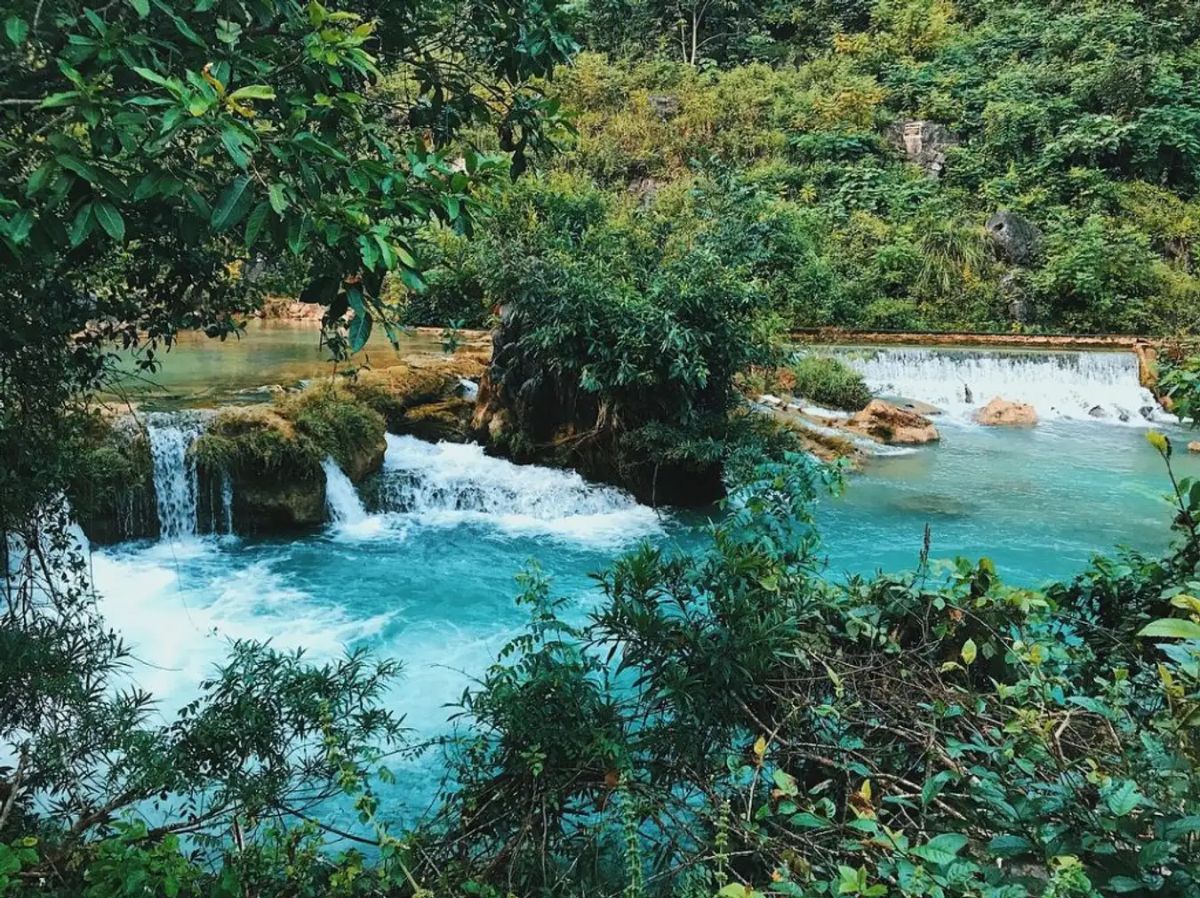
You can visit:
Lenin Stream – a clear, serene brook named by Ho Chi Minh himself,
Cac Mac Mountain – another homage to his ideological roots,
Simple wooden homes where he lived and worked in secret.
Walking these trails feels like turning the pages of a living history book. The surrounding landscape—calm streams, green hills, and whispering trees—adds a poetic layer to this powerful place.
Part of the Thang Hen Lake system, this majestic mountain stands out for a single, extraordinary feature: a perfectly round hole punched through its middle, making it look like a giant watching over the valley.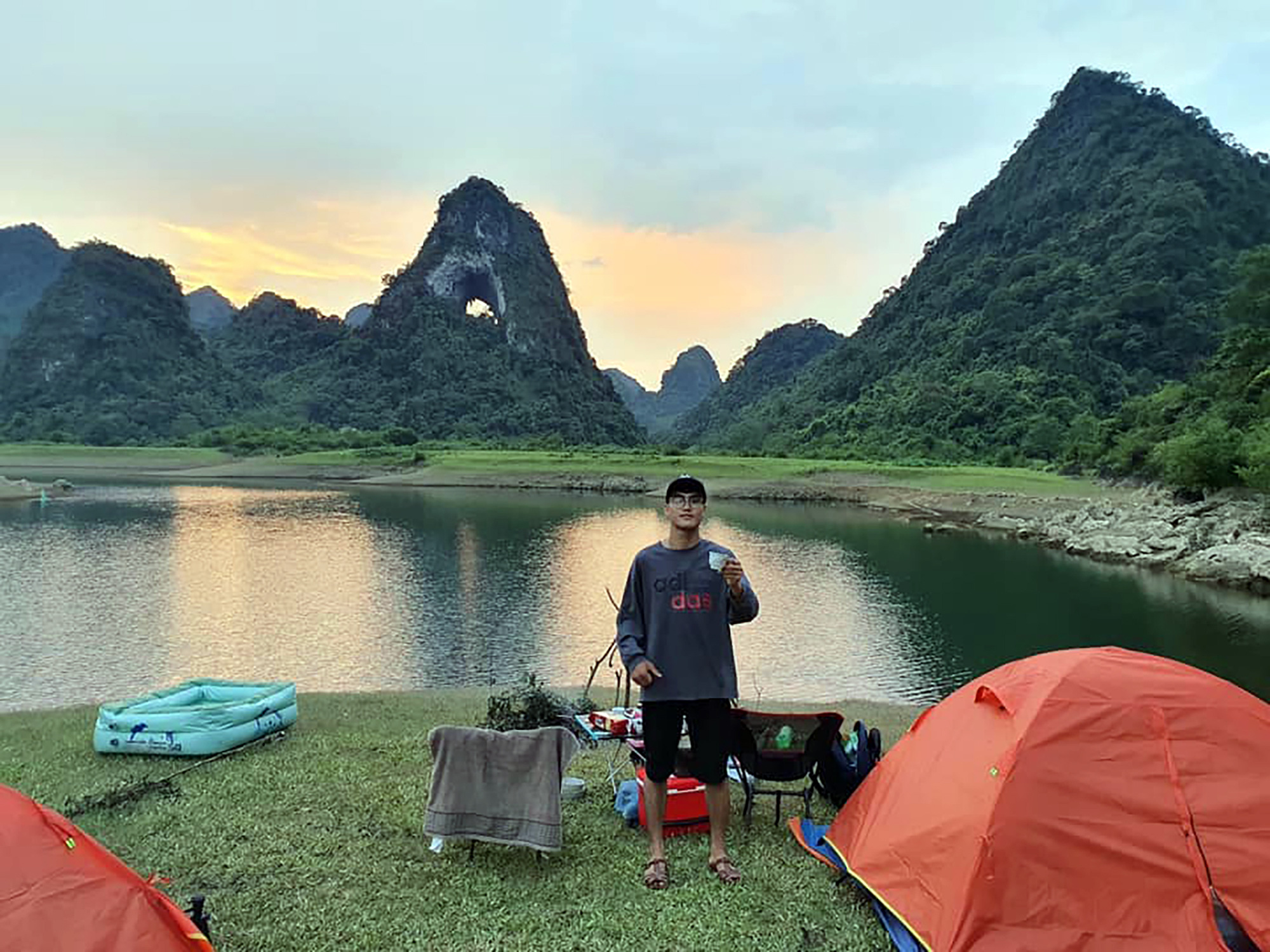
Locals call it Phja Piot or Nui Mat Than, and it’s become a symbolic landmark in the Non Nuoc Cao Bang Geopark.
Getting here requires some hiking, but the reward is well worth it: vast meadows, wild horses grazing, and unspoiled wilderness as far as the eye can see. Bring good shoes, a sense of adventure, and your best panoramic lens.
Want to see traditional Tay culture in action? Visit Khuoi Ky Village, just a few kilometers from Ban Gioc. This peaceful village is famous for its stone stilt houses, built from local limestone—a building method passed down for generations.
The village is quiet and authentic. You’ll see:
Elderly women weaving fabrics,
Children playing under stilted homes,
Smoke curling from outdoor kitchens.
Stone is everywhere—not just in the walls, but in fences, courtyards, and paths. The people here are proud of their heritage and often invite guests to join in traditional meals or storytelling sessions.
It’s a wonderful place to learn about the Tay people’s resilience, creativity, and deep connection to nature.
One of the best ways to experience local life is to visit a highland market—and Cao Bang’s mountain markets are full of life, color, and tradition.
Unlike city markets, these only happen on certain days of the week and rotate between locations. Locals from various ethnic groups—Tay, Nung, H’mong, Dao—come to sell goods, trade food, share stories, and celebrate.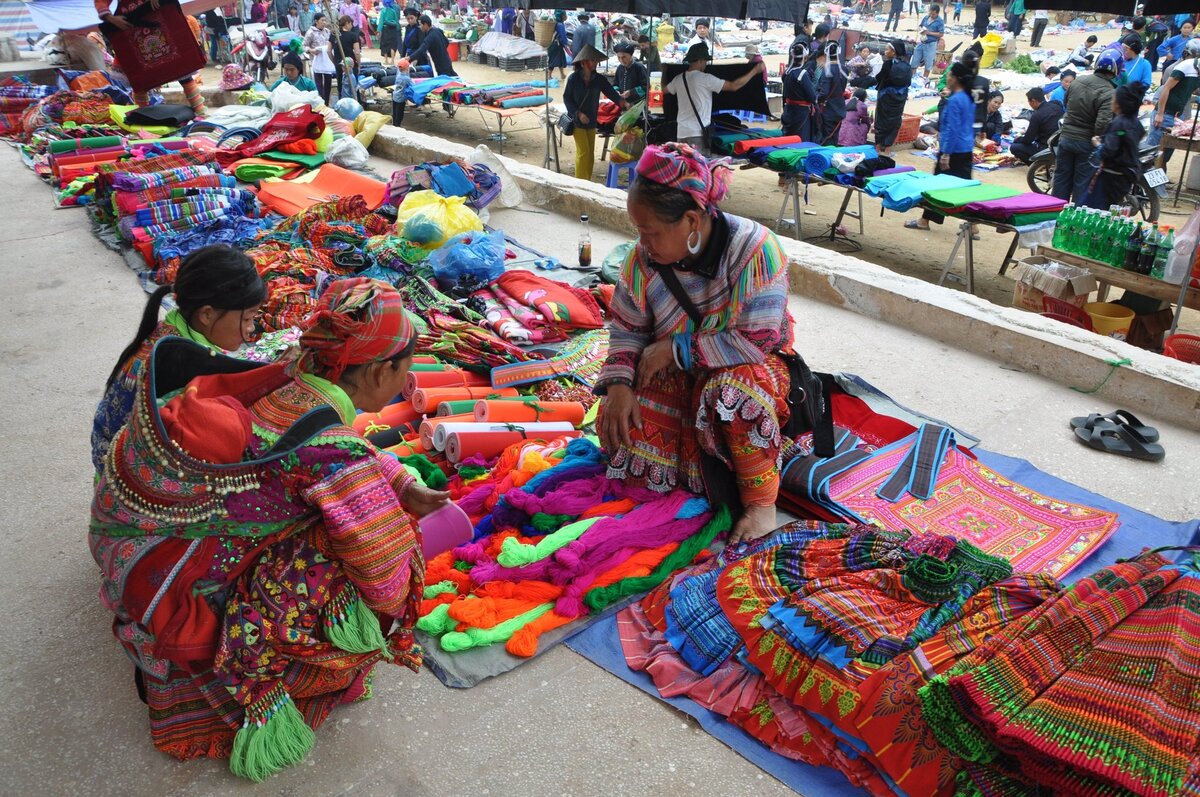
What you’ll find:
Handwoven textiles, silver jewelry, spices, forest honey,
Traditional music and dance,
Smiles and spontaneous conversations.
For international travelers, this is an unforgettable cultural immersion.
When to Visit:
Rainy season (Jun–Sep): Powerful waterfalls, lush greenery, occasional mud.
Dry season (Oct–May): Easier trekking, gentler weather, clearer skies.
What to Pack:
Comfortable hiking shoes, rain jacket (summer), warm layers (winter),
Reusable water bottle, energy snacks, personal medicine,
Camera, power bank, and sunscreen.
Local Etiquette:
Ask before photographing locals,
Dress modestly when visiting temples or villages,
Support local businesses respectfully.
Travel Tip: If you’re unfamiliar with northern Vietnam’s rugged roads, book a guided tour with a trusted operator. That’s where we come in.
From roaring waterfalls and mystical caves to sacred temples and vibrant ethnic villages, Ban Gioc is the heart of Vietnam’s northern soul.
As a leading travel agency Singapore travelers consistently choose for reliable and immersive Vietnam tours, MYCT Viet Nam Travel offers:
Group and private trips,
Custom family adventures,
Romantic couple getaways,
Kid-friendly educational tours.
Let us take care of your travel dreams—from Hanoi to Ban Gioc and beyond.
Ready for the journey of a lifetime? Contact MYCT Viet Nam Travel and let the mountains, waterfalls, and timeless traditions of Cao Bang welcome you.
+65 8853 5678 (Singapore)
(+84)792 780 222 – (+84)788 489 222 (Viet Nam)
info@myct.club
316/6 Nguyen Chi Thanh, Dak Lak, Viet Nam
No. 217 Nguyen Ngoc Nai, Thanh Xuan District, Hanoi, Viet Nam
12 Arumugam Road LTC Building B, #02-11 Singapore 409958
© Copyright 2025 Myct Vietnam Travel. All Rights Reserved.